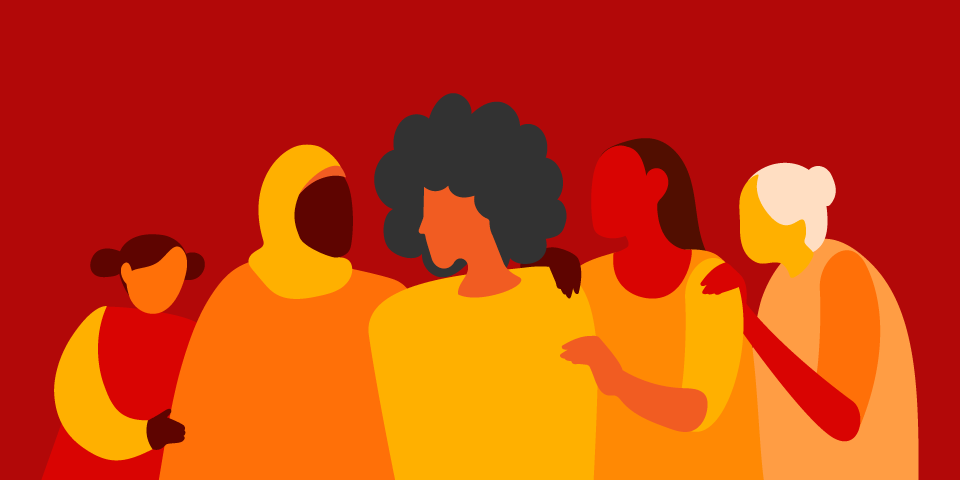Is Use Of Cuss Words To Blame For Violence Against Women?
Aug 25, 2023 | Shalini Rai
All this is also reflective of the type of society we live in -- patriarchal, misogynist, opaque. While the task may appear daunting and impossible, a beginning has to be made somewhere (Representational Image)
Growing up, I would dread train rides, especially the part where I would have to visit the train loo. Apart from the obvious issues of dirty toilets and malfunctioning door locks, it would be the graffiti on the loo door that would rile me up. Accompanying the obscene graffiti would be words describing intercourse in the most vulgar, abusive and disgusting terms.
As a college student, I would wonder what kind of a sick mind would do such a thing, in a public place, where everyone, including women and young girls would be able to see the sick drawings and read the horrific words.
Then I began noticing how often men and young boys (even a few, rare girls) around me would use cuss words, involving what they would do to the mothers, sisters and daughters of their friends — sexually. This would be done in all kinds of situations — from casual utterances to those said in a threatening tone, the list of sexually-explicit and downright sexually abusive words would fly thick and fast between members of the male gender.
None of them seemed to mind it. If anything, varyingly they would ignore it, take it as par for the course and sometimes, even delight in it, suggesting that it is no big deal, not offensive and definitely not insulting and obnoxious.
In a sane world, all this would be considered sacrilegious, abusive and prosecutable. In fact, there is even a term for it — verbal violence. It is also described as gender-based violence.
According to the Council of Europe, verbal violence counts as sexual violence. “Most of the verbal violence that women experience because of being women is sexualised, and counts as sexual violence. Verbal gender-based violence in the public sphere is also largely related to gender roles: it may include comments and jokes about women or may present women as sex objects (e.g. jokes about sexual availability, prostitution, rape),” it says.
Verbal violence may even be classified as hate speech. It can take many forms: words, videos, memes, or pictures that are posted on social networks, or it may carry a violent message threatening a person or a group of people because of certain characteristics. The European Commission on Racism and Intolerance defines hate speech as:
“(…) advocacy, promotion or incitement, in any form, of the denigration, hatred or vilification of a person or group of persons, as well as any harassment, insult, negative stereotyping, stigmatisation or threat in respect of such a person or group of persons and the justification of all the preceding types of expression, on the ground of ‘race’, colour, descent, national or ethnic origin, age, disability, language, religion or belief, sex, gender, gender identity, sexual orientation and other personal characteristics or status.”
Gender-based hate speech mainly targets women (in this case, it is often called sexist hate speech) and LGBT+ people, on the basis of sex, gender, sexual orientation or gender identity both in the private and public spheres. This includes the Internet, which is considered a public sphere.
Needless to say, gender-based hate speech/violence can take many varied forms — threats, slander, jokes, spreading rumours, incitement of violence or hate. As is true with any type of violence, gender-based hate speech is usually very destructive for the person(s) targeted, leading to feelings of uneasiness, fright, low self-esteem and contemplation of suicide.
It is time to face the spectre, look it in the eye and call it out for what it is — deeply profane and objectionable. It is no longer a matter of ‘jest’ and ‘harmless mockery’; it has grievous consequences and when used over a long period of time — in this case, starting from the time boys attain puberty — it becomes ‘normalised’ and people using and hearing words depicting sexual violence no longer feel offended by it.
All this is also reflective of the type of society we live in — patriarchal, misogynist, opaque. While the task may appear daunting and impossible, a beginning has to be made somewhere.
We can make a difference by not mutely ignoring or looking away the next time someone uses sexist slurs and speaks of the female anatomy in a derogatory manner. And yes, objecting to and reporting those filthy graffiti in public places may appear to be ‘ineffective’ but is a good place to start to reclaim respect for women and girls in our midst.
